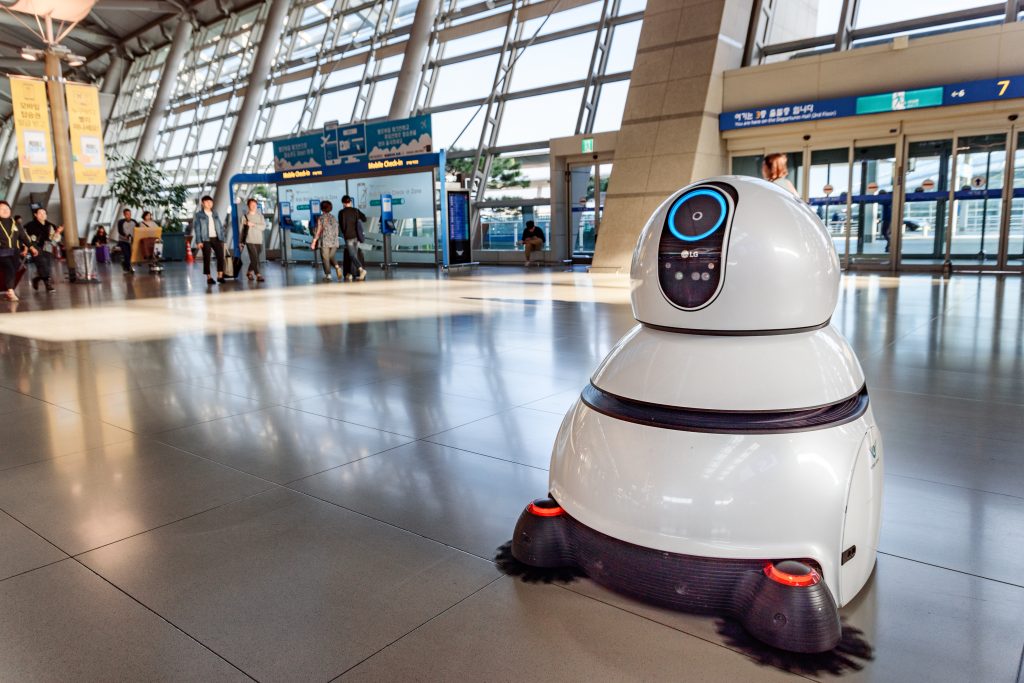The cleaning industry is undergoing a significant transformation with the introduction of smart cleaning technology. Automation, AI-powered robots, and IoT-enabled cleaning systems are reshaping the way businesses maintain cleanliness, efficiency, and safety in commercial spaces. These cutting-edge technologies not only streamline operations but also minimise human error, reduce costs, and ensure a consistently high standard of cleanliness.
In this article, we’ll explore how smart cleaning technology is revolutionising the industry and what benefits it offers to businesses.
AI-Powered Cleaning Robots: Smart, Efficient, and Adaptive
The integration of artificial intelligence (AI) has taken cleaning automation to the next level. AI-powered robots are equipped with sensors, cameras, and advanced algorithms that enable them to navigate complex environments, detect obstacles, and adapt to changes in their surroundings.
How AI Enhances Cleaning:
- Autonomous Navigation: AI cleaning robots can map out spaces, identify cleaning zones, and avoid obstacles like furniture or people, all without human input.
- Adaptive Learning: These robots learn from their environment over time, allowing them to improve their efficiency and performance with each cleaning cycle.
- Real-Time Monitoring: AI-powered systems can provide real-time data on cleaning progress, alerting managers to areas that need attention or issues that arise during cleaning.
This advanced technology is especially useful in large facilities such as airports, hospitals, and office buildings, where regular cleaning is crucial but time-consuming. AI-powered robots can perform tasks like floor cleaning, window washing, and even disinfecting, all while adjusting to changing conditions and ensuring that no spot is missed.
IoT-Enabled Cleaning Systems: Smart Monitoring for Superior Control
The Internet of Things (IoT) has introduced new possibilities for remote monitoring and control in the cleaning industry. IoT-enabled cleaning systems connect various cleaning devices, sensors, and management software, creating a fully integrated ecosystem that allows businesses to monitor and manage their cleaning processes in real-time.
Benefits of IoT-Enabled Cleaning:
- Real-Time Data Collection: IoT sensors track usage patterns, monitor cleanliness levels, and report on the status of cleaning equipment. This data enables businesses to schedule cleanings based on need, rather than a fixed schedule, which can improve efficiency and save resources.
- Predictive Maintenance: IoT technology can alert cleaning staff when equipment needs servicing or when cleaning supplies are running low. This predictive capability helps prevent downtime and ensures that cleaning operations run smoothly.
- Remote Control and Automation: Facility managers can remotely control and schedule cleaning tasks through mobile apps or cloud-based systems. This allows for greater flexibility, as cleaning can be adjusted according to real-time demands, such as a sudden spill or high traffic during an event.
IoT integration is especially beneficial for industries like hospitality, healthcare, and retail, where cleanliness is not only essential but needs to be maintained to a high standard consistently. For example, IoT systems can monitor restrooms in real-time, triggering an alert when cleaning is required based on usage data, ensuring that high-traffic areas are always in top condition.
Reducing Human Error and Increasing Safety
One of the primary advantages of smart cleaning technology is its ability to minimise human error. Traditional cleaning methods, which rely heavily on manual labour, are susceptible to mistakes—such as missing spots, using incorrect cleaning agents, or overlooking crucial areas. Smart cleaning systems ensure precision and thoroughness, leaving little room for error.
Moreover, these technologies can improve safety standards in high-risk environments. For instance, automated floor scrubbers reduce the risk of slip-and-fall accidents by drying floors immediately after cleaning. AI systems can also identify hazards like spills or debris and alert cleaning staff to potential safety risks.
Sustainability and Smart Cleaning Technology
As businesses increasingly focus on sustainability, smart cleaning technology offers solutions that reduce environmental impact. Automated systems are designed to optimize the use of water, energy, and cleaning products, ensuring that resources are used efficiently and waste is minimised.
For example, some smart cleaning systems use sensors to detect the level of dirt or debris and adjust the amount of cleaning solution accordingly, preventing overuse. Additionally, robots and IoT devices can be programmed to clean during off-peak hours, reducing energy consumption by operating when electricity demand is lower.
The Future of Smart Cleaning Technology
The future of smart cleaning technology is exciting, with innovations in AI, robotics, and IoT continuing to enhance cleaning processes. As these technologies evolve, we can expect even greater levels of automation, precision, and efficiency. Future developments may include self-repairing robots, further advancements in machine learning, and deeper integration of IoT platforms, enabling seamless collaboration between cleaning devices and facility management systems.
Businesses that adopt these technologies today are not only enhancing their cleaning efficiency but are also preparing for a future where smart cleaning solutions become the industry standard.
Conclusion: Embracing the Power of Smart Cleaning
Smart cleaning technology represents a significant leap forward for the cleaning industry. With automation, AI-powered robots, and IoT-enabled systems, businesses can enjoy higher cleaning standards, improved efficiency, and reduced human error. Whether managing a large facility or a small office space, adopting smart cleaning technology can enhance productivity, safety, and overall cleanliness, ultimately contributing to a better work environment and customer experience.
As the industry continues to innovate, businesses that embrace these technologies now will lead the way in creating cleaner, safer, and more sustainable commercial spaces.


